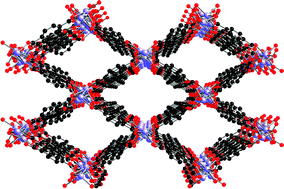Syntheses, structures and properties of cadmium benzenedicarboxylate metal–organic frameworks†
Abstract
The products isolated from the reaction between Cd(NO3)2·4H2O and

* Corresponding authors
a
Department of Chemistry, University of Bath, Claverton Down, Bath, UK
E-mail:
a.d.burrows@bath.ac.uk, m.f.mahon@bath.ac.uk
b
Department of Chemical Engineering, University of Bath, Claverton Down, Bath, UK
E-mail:
s.p.rigby@bath.ac.uk
c Institute for Materials and Processes, School of Engineering and Electronics, University of Edinburgh, The King's Buildings, Mayfield Road, Edinburgh, UK
The products isolated from the reaction between Cd(NO3)2·4H2O and

 Please wait while we load your content...
Something went wrong. Try again?
Please wait while we load your content...
Something went wrong. Try again?
A. D. Burrows, K. Cassar, T. Düren, R. M. W. Friend, M. F. Mahon, S. P. Rigby and T. L. Savarese, Dalton Trans., 2008, 2465 DOI: 10.1039/B718947H
To request permission to reproduce material from this article, please go to the Copyright Clearance Center request page.
If you are an author contributing to an RSC publication, you do not need to request permission provided correct acknowledgement is given.
If you are the author of this article, you do not need to request permission to reproduce figures and diagrams provided correct acknowledgement is given. If you want to reproduce the whole article in a third-party publication (excluding your thesis/dissertation for which permission is not required) please go to the Copyright Clearance Center request page.
Read more about how to correctly acknowledge RSC content.
 Fetching data from CrossRef.
Fetching data from CrossRef.
This may take some time to load.
Loading related content
